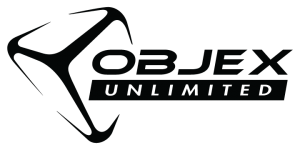3D Scanning Basics – A Primer for Turning Real Objects into Digital Files
This article was initially published in the July 2015 Issue of Graphic Arts Magazine.
Whatever your application may be, the one thing you will always need for ANY 3D print is a functional 3D design file. You can design the file from scratch using CAD (or any of the various 3D design software programs), but you’ll quickly discover that this process is labourious and requires a very advanced set of skills. One of the best ways to kick-start your design process is to utilize 3D scanning technologies. Additionally, there are a variety of applications where you can utilize 3D scans for modelling and visualizing in the digital realm. This column will cover some of the 3D Scanning Basics you need while entering this world.
3D scanning uses a device that analyzes a real-world object or environment to collect data on its shape, texture and (in some cases) colour. Certain devices are handheld and hover around the object to obtain a collection of snapshots that are stitched together to create a full three-dimensional model. Other devices affix the scanner to a tripod and use a turntable to rotate the object. Some devices are in the form of a chamber or booth, with the object or person positioned in the center as they’re scanned from multiple angles. Finally, there are scanners that can be attached to an aircraft or vehicle to capture entire landscapes. No matter what form a 3D scanner takes, it will give you a huge leg up on developing your design.
Why use 3D Scanning?
On the most basic level, 3D scanning is a quick and effective way to capture the geometry of an existing object, which will aid in the design of new items and fixtures, applying an extension or new part to an existing geometry, or in reverse engineering applications. If you’re designing a part to be used for some pre-existing device (for example a vehicle, tool or machine), you can quickly capture the dimensions and measurements of a physical object and be confident your parts will fit together on the first try. You can enhance or change an existing part you’ve created, or digitize parts that were built before CAD software became widely used. You’ll see 3D scanning in the field of biometrics, obtaining 3D data for the design of prosthetics and implants, and increasingly used in the field of graphics and VFX, providing digital assets in the creation of 3D animations. 3D scanning is also being used more and more as a means of historical preservation. In fact, many objects from our past which are starting to show the effects of time can be digitally stored and maintained, or replicated through 3D printing. There’s an endless list of possibilities for 3D scanning and new ones are popping up every day.
3D Scanning Technologies
As you’ll soon realize, as with many things in the realm of 3D, there is no one-size-fits-all solution when it comes to 3D scanners. So it’s best to figure out your particular needs and choose a scanner that suits your specific application.
Structured Light Scanning. These 3D scanners project a pattern of lights onto an object. The scanner then reads the reflections in the light to analyze curves and bends in the surface of the object. These scanners are flexible to use, good for many applications and safe on human eyes. These are generally a lower cost, but are not optimal on reflective or refractive surfaces.
Laser Scanning. These 3D scanners function similar to Structured Light, except they use lasers instead of a blanket of light. These can be great for precise engineering applications and capturing fine details, but are unsafe for human eyes. Thus they need to be used in a controlled environment.
Photogrammetry. This method uses multiple cameras to capture the object from different angles along with an algorithm that triangulates common points to analyze depth and create a 3D model. It gives you the best colour detail, however is not the most accurate for making precise measurements.

Objex Unlimited President and Founder Steve Cory inside the Selftraits Photogrammetry 3D Scanning Booth
Also worth mentioning are MRI/CAT scans which are used in medical applications to scan inside an individual’s body. And CMM machines – though technically not 3D scanning – use a physical probe to get precise dimensions of an object.
The Artec Eva 3D Scanner
One of the 3D scanners we often recommend is the Artec Eva handheld Structured Light Scanner. While it won’t be the optimal scanner for every situation, it is certainly one of the most versatile and easy-to-use scanners on the market and is priced very competitively. The Eva doesn’t require markers or calibration. It captures objects quickly in high resolution and vibrant colour at up to 16 frames per second. These frames are aligned automatically in real time, which make scanning easy and fast. Please contact us at Objex Unlimited for a demonstration, or to answer any questions.
 Matthew Belo is a Brand Manager and 3D Solution Specialist Working for Objex Unlimited Inc., Canada’s most diverse 3D Printing Solutions Provider. With a background in Marketing and Sales, Matthew has immersed himself in all things 3D. He focuses on looking for real opportunities that leverage 3D technologies while working to dispel myths and misconceptions associated with the equipment. Graduating from University of Waterloo, Matthew focused his studies on Rhetoric and Professional writing as well as Business and Marketing. Matt loves to discuss topics and issues related to Additive Manufacturing and will gladly answer questions, hear your opinions, and talk shop! He can be reached at matt@objexunlimited.com, or at 416-233-7165.
Matthew Belo is a Brand Manager and 3D Solution Specialist Working for Objex Unlimited Inc., Canada’s most diverse 3D Printing Solutions Provider. With a background in Marketing and Sales, Matthew has immersed himself in all things 3D. He focuses on looking for real opportunities that leverage 3D technologies while working to dispel myths and misconceptions associated with the equipment. Graduating from University of Waterloo, Matthew focused his studies on Rhetoric and Professional writing as well as Business and Marketing. Matt loves to discuss topics and issues related to Additive Manufacturing and will gladly answer questions, hear your opinions, and talk shop! He can be reached at matt@objexunlimited.com, or at 416-233-7165.
About Objex Unlimited
Objex Unlimited 3D Printing Studio is a 3D solutions provider and 3D product reseller specializing in 3D Printing, 3D Scanning, 3D Design and 3D Services. We’re leading the 3D printing revolution to explore, develop, and commercialize new applications in 3D. Leveraging unparalleled expertise in 3D technologies, we work with you personally to find a product or solution that will save you time, effort, and money. We will bring your ideas and designs to life by creating working parts, beautiful full-colour models, and rapid prototypes. Authorized resellers of 3D Systems, Artec, Markforged and LMI Technologies.








Leave a Reply
Want to join the discussion?Feel free to contribute!